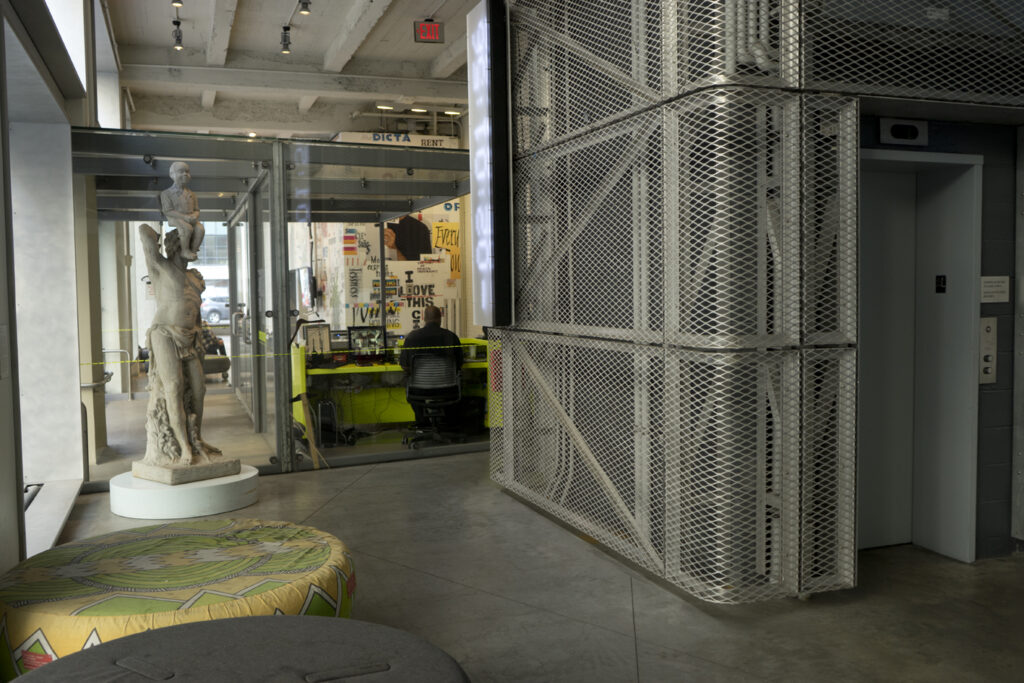
I was very excited when Fred Wilson’s Untitled [Pride & Prejudice), 1993 appeared in the Sheila Johnson Design Center. This deceptively rich work utilizes a readymade cast cement classical figure, upon which a lasting vestige of American racism has been surreptitiously attached. Both pieces are left as Wilson purchased them, in an unfinished off white concrete, contemporary Americana’s versions of Greek and Roman stone sculptures. The art collection curators’ placement of this particular work here at Parsons seems to be meant to challenge and provoke discussion amongst this unique audience, those working and studying at a school for art and design. With this intervention, we’re necessarily reminded to look past formal considerations toward the implications of content and context, and the reverberating memory that these objects possess.
However, something about its current placement feels wrong. This work became a welcome part of our daily commute some four years ago when it was originally placed adjacent to the aluminum gridded single shaft elevator so that those waiting could see the work. Perhaps because the lobby serves many functions, this work has since been moved behind an elevator shaft dangerously close to blending in with functional load bearing columns. Whether for its own protection from opening reception mini-bar operators, sleeping students, or just general commuting, this work now feels cornered, and hidden; safely placed out of the way, stored as before, when it was in the possession of a shopkeeper.
In the 2005 Art 21 episode entitled “Structures,” Fred Wilson says that he is very interested in “creating a metanarrative about museums and display” and that he is interested in “what the visual of the space is doing to the [art] object”. What are we at The New School saying with our placement of Fred Wilson’s Untitled [Pride & Prejudice), 1993?
Do you feel this work is intended for any specific audience? How does placing it in the atrium of an art and design school affect the ownership of this [loaned] work, and the ideas it might evoke?
Is it necessary [or even possible] that this work makes a contribution to the conversations about race here at The New School?
Or is that question itself an example of tokenism—that we ask more of this particular work because of the subject matter and issues it might address?
Paul Nicholson
Staff, Parsons The New School for Design

